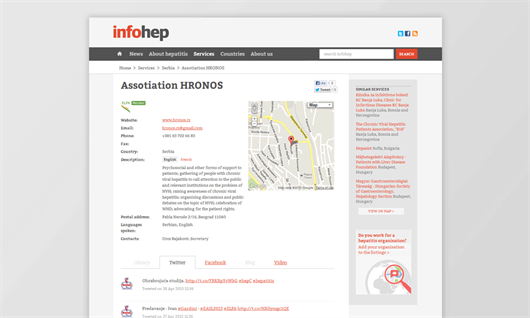Nearly half of people with hepatitis C in the United States are not tested for the virus until they develop clinical signs and symptoms such as elevated liver enzymes or jaundice, according to a study published in August. These findings support US guidelines issued in 2012 advising all 'baby boomers' born between 1945 and 1965 to be tested, regardless of risk factors.
In Europe, testing for hepatitis C is recommended for people who have known risk factors for hepatitis C infection. Recommendations vary from one country to another. In most countries, testing is recommended for people who have injected drugs in the past, and for people who currently inject drugs. However, the 2012 Euro Hepatitis Care Index Report published by ELPA (the European Liver Patients Association) found that in 8 out of 30 countries in western and central Europe there was no systematic screening for people who currently inject drugs, despite the high risk of exposure to hepatitis C through the sharing of injecting equipment.
Testing is recommended in most countries for people who received blood transfusions or blood products prior to 1989.
These variations between European countries suggest that the proportion of people who are diagnosed with hepatitis C only when they develop symptoms of liver damage is likely to be just as high in Europe as in the United States.
Early diagnosis of hepatitis C is essential in order to limit the progression of liver damage caused by the virus. Currently available hepatitis C treatment is more likely to clear the virus if it is given before the development of cirrhosis. Diagnosing hepatitis C before the development of cirrhosis enables people to choose to undergo a course of treatment when the chances of a cure are higher.



Connect with infohep on Facebook: Keep up to date with all the latest news and developments.
Follow infohep on Twitter for links to news stories and updates from infohep.org. Follow us at www.twitter.com/infohep.
Follow all the infohep news by subscribing to our RSS feeds.